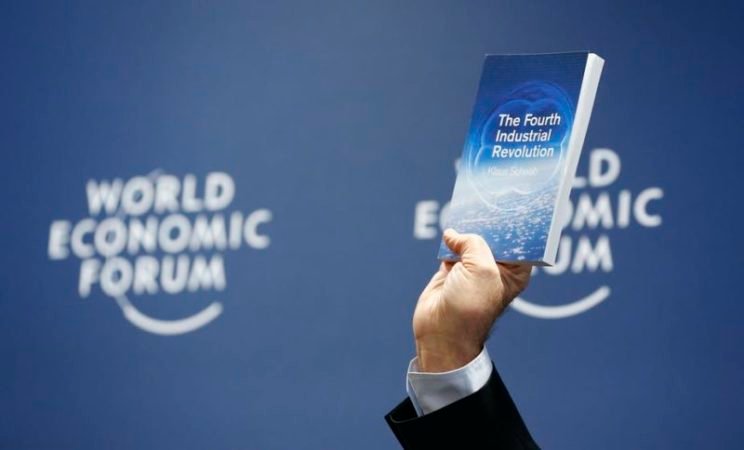How the 4th industrial revolution will take over our lives due to COVID 19

The term Industrial Revolution was first popularized by the English economic historian Arnold Toynbee to describe Britain’s development from 1760 to 1840. It witnessed the emergence of mechanization, a process that replaced agriculture with industry as the foundations of the economic structure of society. It created a chemical industry with no chemistry, an iron industry without metallurgy, power machinery without thermodynamics. While the First Industrial Revolution caused the growth of industries, such as coal, iron, railroads and textiles, the Second Industrial Revolution witnessed the expansion of electricity, petroleum and steel. The Third Industrial Revolution, or the Digital Revolution, refers to the advancement of technology from analogue electronic and mechanical devices to the digital technology available today. The era started during the 1980s and is ongoing.
The Fourth Industrial Revolution represents a fundamental change in the way we live, work and relate to one another. It is a new chapter in human development, enabled by extraordinary technology advances commensurating with those of the first, second and third industrial revolutions. The Fourth Industrial Revolution builds on the Digital Revolution, representing new ways in which technology becomes embedded within societies and even the human body. It is marked by emerging technology breakthroughs in a number of fields, including robotics, artificial intelligence, nanotechnology, quantum computing, biotechnology, The Internet of Things, 3D printing and autonomous vehicles. The fourth revolution is unfolding before our eyes. For India, the Fourth Industrial Revolution brings tremendous opportunities to leapfrog many stages of development, hastening its journey towards becoming a developed economy. In many ways, the Fourth Industrial Revolution is a leveller. The technologies being used in India will be the same as those in use in the developed world. Robots, AI, IoT are all technologies transforming the industry in the West and are ready to do the same in India.

The COVID-19 crisis has shown us that emerging technologies like the Internet of Things and artificial intelligence are not just tools, they are essential to the functioning of our society and economy. Particularly in this time of instability, we need to think of them as critical infrastructure. Our ability to be adaptive, human-centred and inclusive in the way we develop policy and protocols for emerging technologies has never been more essential. The continued security and resilience of our society depends on it. As the Covid-19 outbreak forced the cancellation of trips, large gatherings and a slowdown in manufacturing, the economic damage is mounting across the world. The call for social distancing has resulted in universities suspending lectures, churches halting services and many companies formulating plans on how to safeguard their employees. Schools have brought mid-term breaks forward with the intent of running catch-up classes when they resume. The effects of Covid-19 have also left supply chains around the world disrupted. China’s industrial output contracted at the sharpest pace in 30 years, as workers were told to stay home, falling by 13.5% in January and February 2020, according to Reuters. Worldwide, a delay in the fulfilment of orders is being felt as companies like Apple reduce their revenue growth forecast.
In all this despair, digital solutions are rising to save the day. As business and schools ramp up their disaster management plans, turning to the use of smart technologies seems to be the only way to keep essential services running. The technology early adopters have been able to make a more straightforward switch as their customers are already used to online services like getting statements, paying bills and customer support. Those companies are fast opting for employees, who were in open-plan environments, to rather work from home. The star of the show has been technologies like 3D printing, helping to support industrial supply chains that are affected by limitations on traditional production and imports. A good example is in Italy where Brescia (near one of the hardest-hit regions for Covid-19 infections), urgently needed Venturi valves for an intensive-care device which the supplier could not provide in a short time. An additive manufacturing firm came to the rescue that brought a 3D printer directly to the hospital and, in just a few hours, redesigned and then produced the missing piece. As per the New Yorker, Estonia may be the nation best prepared for the consequences of the pandemic, both economically and socially. The country already treats technology like critical infrastructure and could serve as an example for others to follow. China has been using drones to ensure medical samples and quarantine materials travel with minimal risk to high-risk areas hence reducing contact between samples and personnel. Universities with online programs continue with their academic year instead of entirely suspending classes and the use of videoconferencing for children’s education exploded over the last month as lockdowns forced schools to go remote. But these platforms can sometimes highlight critical privacy and security flaws. Such tools underscore the need for a global baseline consensus on security to help users understand the risks posed by each device and network.

No one knows what the conclusive socioeconomic impact of Covid-19 will be, however, the prediction is recovery will be slow. As markets are reconfigured across the world as a result of the economic devastation, a new digital world will emerge. Digital automation will no longer be a consideration for someday in the future, but rather an imperative as organizations grapple with how to future-proof themselves. The Covid-19 outbreak is an opportunity for African nations to accelerate all Fourth Industrial Revolution plans. Late adopters can no longer afford to wait-and-see lest another crisis hits. The digital divide must be addressed and technology adoption accelerated so we can readily face the next challenge. If in response to this pandemic, we can match technology with the appropriate institutions, standards and norms, we will emerge stronger than before.



















